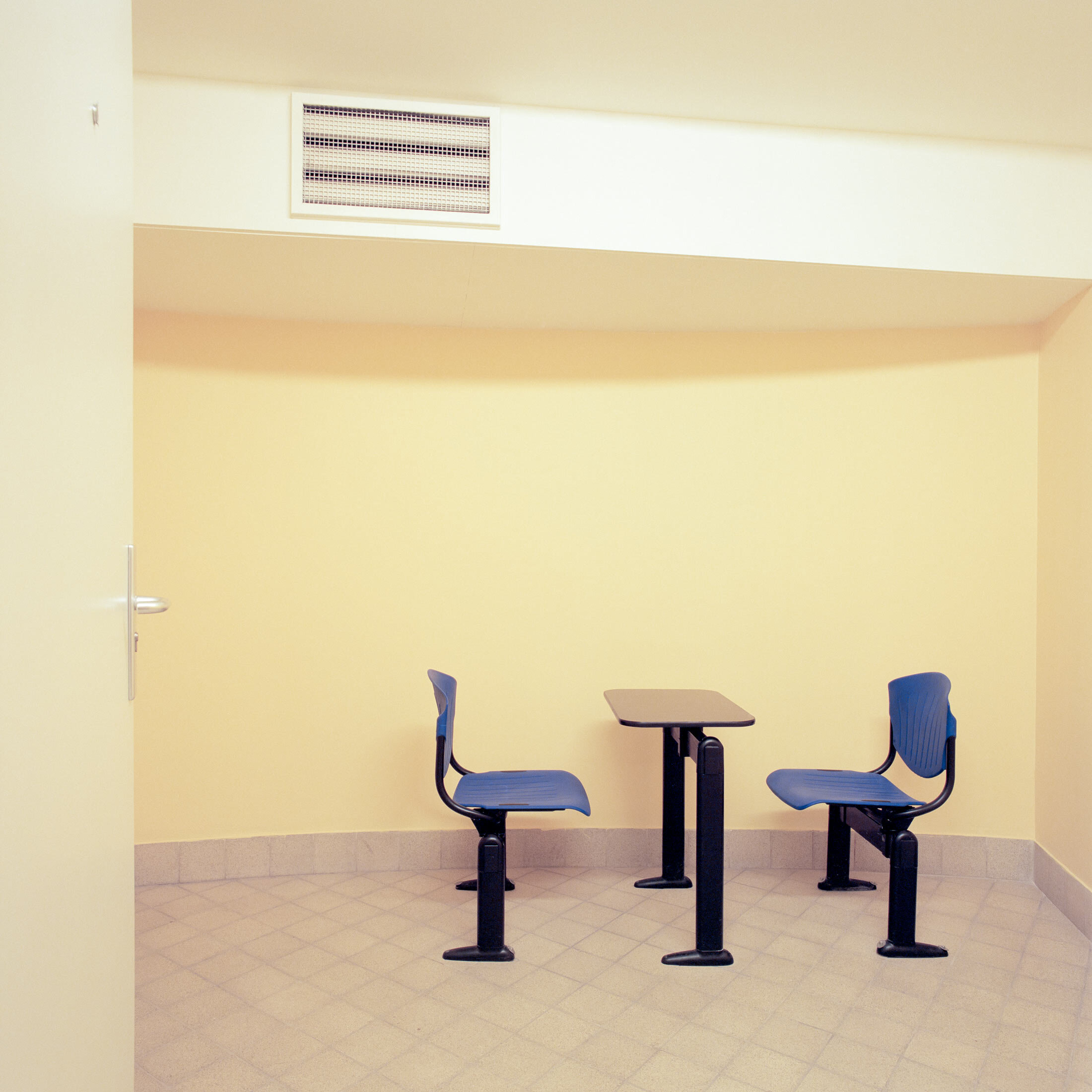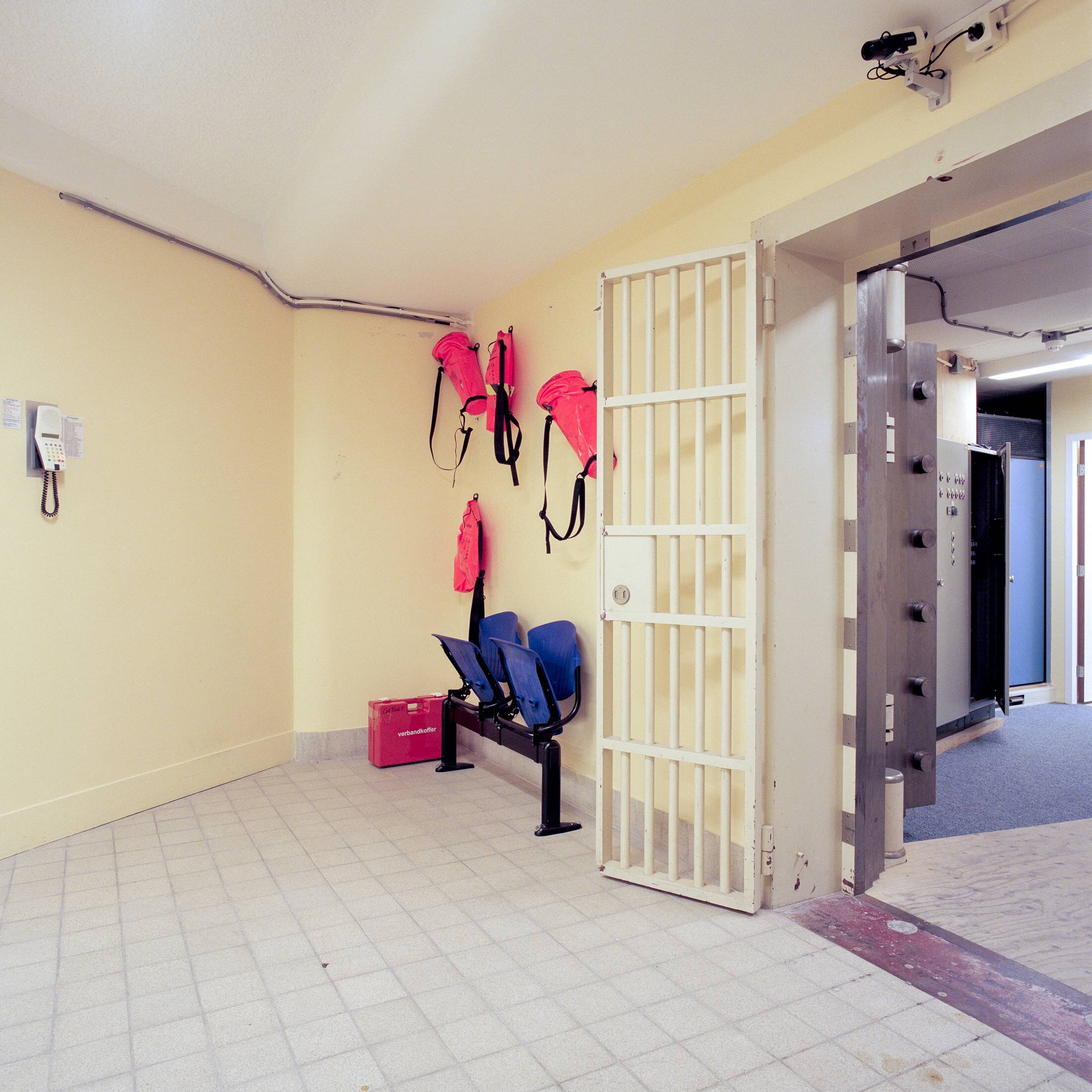Cells
The accused were held in the United Nations Detention Unit, the UNDU, which was located in a wing of a Dutch prison in the Scheveningen area of The Hague. In the UNDU were also held those who had been convicted and who were appealing their conviction and those who, having had their conviction confirmed on appeal, awaited transfer to a state in which they would serve their sentence. But cells were also needed in the Tribunal building itself to hold the accused and convicted persons. And many cells were needed when several multi-accused mega-trials were running in parallel.
The accused and convicted were brought to these cells before the hearings and held there during breaks. The many highly trained Security Officers employed by the Tribunal were key to make the many such transfers operate like clockwork on a daily basis. It is the perfect example of a vital function that was literally working behind the scenes to ensure that proceedings could take place. The building contained numerous hidden access gates and gangways in the walls through which the accused and convicted persons were moved out of sight.
Courtroom 3 had adjacent holding cells but accused and convicted who attended hearings in the other two courtrooms were brought to two cellblocks located underground through such hidden gangways. The circular area shown in these photos was right under the Tribunal’s lobby. The large safe-like door was not used. In fact, it always stayed open, a relic from when the area was the vault of the insurance company that originally inhabited Churchillplein 1. Cellblock 2 was a smaller area also located in the Tribunal’s basement. The yellow colour was applied throughout the cell areas, and in many other areas, too, such as the Audio/Video and interpreters’ booths around the courtrooms. It was supposedly chosen because of its soothing qualities.





























